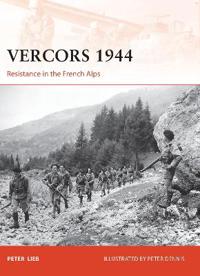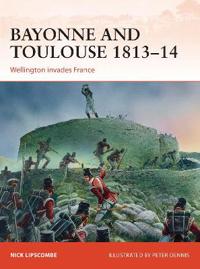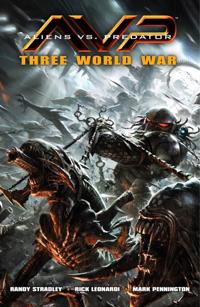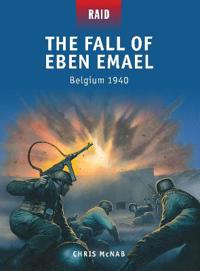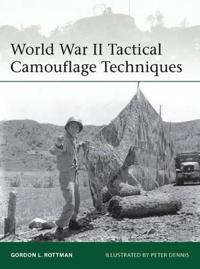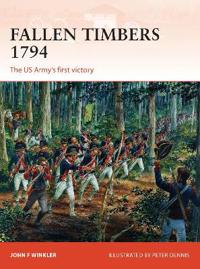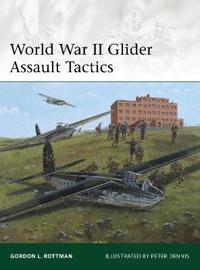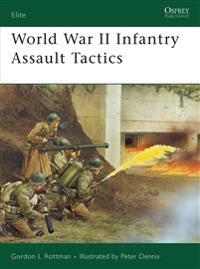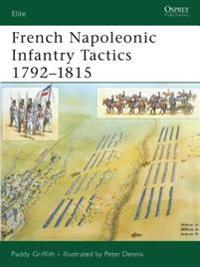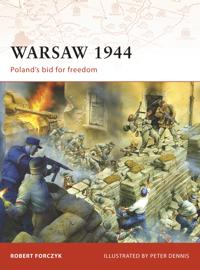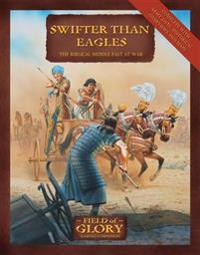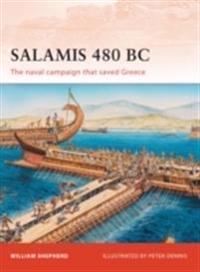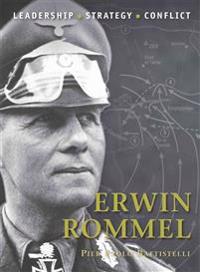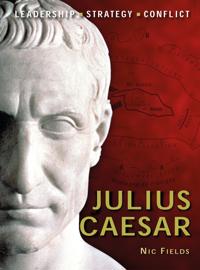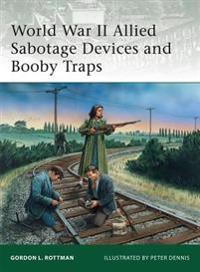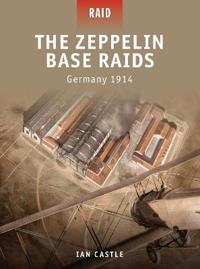Stalingrad 1942 (Pocket)
avPeter D. Antill, Peter Dennis, Peter D. Antill
ISBN: 9781846030284 - UTGIVEN: 200706Stalingrad has become a by-word for grim endurance and tenacity; for the refusal to give up, no matter the cost. In this book, Peter Antill takes a dispassionate look at one of the most talked about battles in history. He asks why the Germans allowed themselves to be diverted from their main objecti[...]
The Pattern 1853 Enfield Rifle (Pocket)
avPeter Smithurst, Peter Dennis, Peter Smithurst
ISBN: 9781849084857 - UTGIVEN: 201107The Pattern 1853 Enfield Rifle was the first rifled firearm issued to every soldier in the British Army, and gave the infantry a revolutionary increase in firepower. First issued in 1853, the Enfield proved itself worthy during both the Crimean War and the Indian Mutiny, where its long range, durabi[...]
Vercors 1944 (Pocket)
avPeter Lieb, Peter Dennis, Peter Lieb
ISBN: 9781849086981 - UTGIVEN: 201212Fighting insurgents has always been one of the greatest challenges for regular armed forces during the 20th century. The war between the Germans and the French resistance, also called FFI (Forces Francaises d'Interieur), during World War II has remained a near-forgotten chapter in the history of the[...]
Poikien 100 piirrosta (Spiral)
avPeter Smithurst, Peter Dennis, Peter Smithurst
ISBN: 9789512089529 - UTGIVEN: 2012Mahtavia piirustusideoita, jotka innostavat keksimään kaikenlaista hauskaa. Mukana 300 tarraa.
Bayonne and Toulouse 1813-14 (Häftad)
avPeter Dennis
ISBN: 9781472802774 - UTGIVEN: 2014-03The news of Wellington's momentous victory at Vitoria on 21 June 1813 reached London in early July. Celebration spawned an expectation of a rapid conclusion to events in the Peninsula. His Majesty's Government gave authority for Wellington to invade France and made noises and plans for the redeploym[...]
Dennis Hopper: The Wild Ride of a Hollywood Rebel (Häftad)
avPeter L. Winkler
ISBN: 9781569805138 - UTGIVEN: 2014-08Now in paperback, Dennis Hopper: The Wild Ride of a Hollywood Rebel is the first book to cover the entire legendary life and career of the man who hung out with James Dean, Elvis Presley, and Jack Nicholson, co-starred in and directed Easy Rider, and came back big in Blue Velvet, after recovering fr[...]
Aliens Vs. Predator (Häftad)
avGordon L. Rottman, Peter Dennis, Gordon L. Rottman
ISBN: 9781595827029 - UTGIVEN: 201106In "Aliens vs. Predator: Three World War" a long-lost Predator clan stakes its claim for galactic dominance, intent on exterminating its rival clan, the self-same trophy hunters who have plagued Earth's history. And if the advanced technology and military precision of this new threat weren't enough,[...]
Mark IV vs A7V (Pocket)
avDavid R. Higgins, Ian Palmer, Peter Dennis
ISBN: 9781780960050 - UTGIVEN: 201301The German A7V and the British Mark IV were similar in weight, size, and speed, but differed significantly in armour, armament and maneuverability. The A7V had thicker armour, and had nearly double the horsepower per ton. The Mark IV's pair of side-mounted 6pdr cannons forced the vehicle to present [...]
The Fall of Eben Emael (Pocket)
avChris McNab, Peter Dennis, Alan Gilliland
ISBN: 9781780962610 - UTGIVEN: 201302In early May 1940, the fortress of Eben Emael was a potent sentinel over the Belgian-Dutch borderlands. The fortress covered 75 hectares on the surface, had 5km of tunnels underground and was studded with bunkers, gun turrets and casemates. Add a garrison of 1,200 men and the natural protection of 6[...]
World War II Tactical Camouflage Techniques (Pocket)
avGordon L. Rottman, Peter Dennis, Gordon L. Rottman
ISBN: 9781780962740 - UTGIVEN: 201302This book explains and illustrates the actual materials and techniques adopted (both successfully and unsuccessfully) by tactical units - i.e. the concealment of personnel, weapons, equipment, field positions, and movement by infantry riflemen and weapons crews, artillerymen, and vehicle crews. It c[...]
Fallen Timbers (Pocket)
avJohn F. Winkler, Peter Dennis, John F. Winkler
ISBN: 9781780963754 - UTGIVEN: 201302Following the defeat at Wabash, in 1792 the Washington administration created a new US Army to replace the one that had been destroyed. The man chosen to lead it was the famous Major-General Mad Anthony Wayne. Having trained his new force, Wayne set out in 1793 to subdue the Ohio Indians. Wayne face[...]
World War II Glider Assault Tactics (Häftad)
avPeter Dennis
ISBN: 9781782007739 - UTGIVEN: 2014-03Military gliders came of age in World War II, when glider-assault infantry were the forerunners of today's helicopter-delivered airmobile troops. From the light pre-war sports and training machines, several nations developed troop-carrying gliders capable of getting a whole squad or more of infantry[...]
World War II Infantry Assault Tactics (Pocket)
avGordon L. Rottman, Peter Dennis, Gordon L. Rottman
ISBN: 9781846031915 - UTGIVEN: 200803Osprey's examination of assault tactics used by the infantry during World War II (1939-1945). Just about every war movie - famously, "Saving Private Ryan" and "Band of Brothers" - includes dramatic scenes of soldiers trying to attack an enemy pillbox or trench. Continuing the series explaining World[...]
French Napoleonic Infantry Tactics 1792-1815 (Pocket)
avPaddy Griffith, Peter Dennis, Paddy Griffith
ISBN: 9781846032783 - UTGIVEN: 200711This book will provide a careful analysis of the preparation of the French troops from manual regulations to the training ground, as well a study of the changing quality of command and control within the army. Initially this ensured that the French infantry were virtually unstoppable and for several[...]
World War II Street-Fighting Tactics (Pocket)
avStephen Bull, Peter Dennis, Stephen Bull
ISBN: 9781846032912 - UTGIVEN: 200809Osprey's study of street-fighting tactics during World War II (1939-1945). In a continuation of the tactics mini-series, this new book describes and analyzes the physical tactics of the close-quarter fighting that took place in the ruined cities on both the Western and Eastern Fronts of World War II[...]
Warsaw 1944 (Pocket)
avRobert Forczyk, Peter Dennis, Robert Forczyk
ISBN: 9781846033520 - UTGIVEN: 200903Defeated and occupied in 1939, Poland had suffered under the Nazi heel for nearly five years. Undaunted, however, the Poles formed an underground army, the Armia Krajowa (Home Army), and waited for a moment of German weakness. That moment seemed to have arrived in July 1944 as the Soviet armies bega[...]
Solferino 1859 (Pocket)
avRichard Brooks, Peter Dennis, Richard Brooks
ISBN: 9781846033858 - UTGIVEN: 200904The battle of Solferino, fought during the Franco-Austrian War of 1859, was the largest European battle since Leipzig in 1813. In the presence of three crowned heads of state - Napoleon III of France, Emperor Franz-Joseph of Austria and Victor Emmanuel II of Piedmont-Sardinia (later the King of all [...]
Swifter Than Eagles (Pocket)
avRichard Scott, Peter Dennis, Richard Scott
ISBN: 9781846034800 - UTGIVEN: 200904Field of Glory provides the historical tabletop wargamer with a new, accessible rules set. With no new high-quality games system aimed specifically at the Ancient and Medieval wargamer for over 10 years, this product will fill the gap in this market." Swifter Than Eagles "provides an accessible, det[...]
Teutoburg Forest AD 9 (Pocket)
avMichael McNally, Peter Dennis, Michael McNally
ISBN: 9781846035814 - UTGIVEN: 201101Arminius, a young member of the Cheruscan tribe under the Roman Empire felt that Rome could be beaten in battle and that such a victory would guarantee the freedom of the Germans as a confederation of independent tribes, led by the Cheruscans, who would - in turn - be led by him.
Through[...]Salamis 480 BC (Pocket)
avWilliam Shepherd, Peter Dennis, William Shepherd
ISBN: 9781846036842 - UTGIVEN: 201006In 480 BC, the Greek and Persian fleets met in a battle in the strait between Attica and the island of Salamis. Although outnumbered, the Greeks delivered a crushing victory that ended the Persian threat to Greece. This book draws on the findings of archaeological, technological and naval research, [...]
Erwin Rommel (Pocket)
avPier Paolo Battistelli, Peter Dennis, Pier Paolo Battistelli
ISBN: 9781846036859 - UTGIVEN: 201007Nicknamed 'The Desert Fox' for his cunning command of the Afrika Korps, Erwin Rommel remains one of the most popular and studied of Germany's World War II commanders. He got his first taste of combat in World War I, where his daring command earned him the Blue Max, Germany's highest decoration for b[...]
Julius Caesar (Pocket)
avNic Fields, Peter Dennis, Nic Fields
ISBN: 9781846039287 - UTGIVEN: 201006One of the greatest military commanders in history, Julius Caesar's most famous victory - the conquest of Gaul - was to him little more than a stepping stone to power. An audacious and decisive general, his victories over the Gauls allowed him to challenge for the political leadership of Rome. Leadi[...]
World War II Allied Sabotage Devices and Booby Traps (Pocket)
avGordon Rottman, Peter Dennis, Gordon Rottman
ISBN: 9781849081757 - UTGIVEN: 201011Following Churchill's directive to 'set occupied Europe ablaze', the SOE and later its American sister organization, the OSS, were deployed across the continent. Outnumbered, surrounded and in great peril, these brave agents were armed with a wide variety of devices to help them achieve their object[...]
The Zeppelin Base Raids (Pocket)
avIan Castle, Peter Dennis, Mariusz Kozik
ISBN: 9781849082433 - UTGIVEN: 201104In the summer of 1914, as Europe teetered on the brink of war, the spectre of immediate Zeppelin raids on London and other major British towns and cities loomed large. When Winston Churchill accepted responsibility for the defence of London, he realised that Zeppelins were most vulnerable when on th[...]



